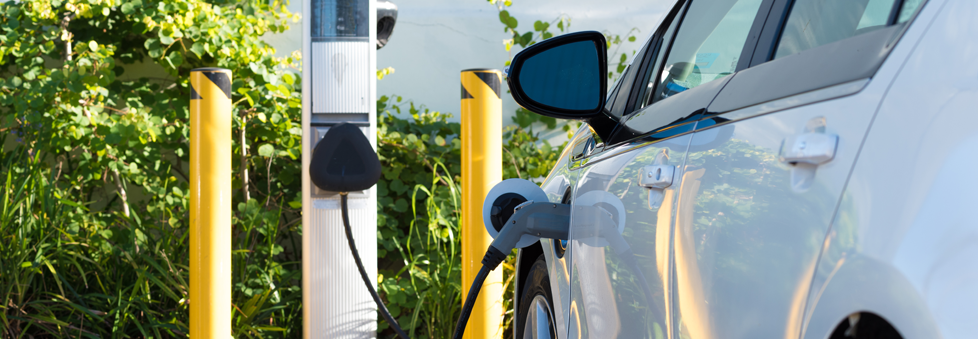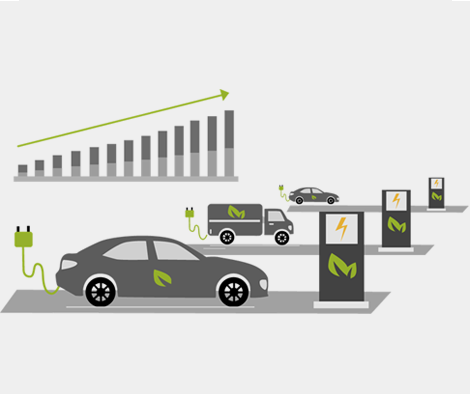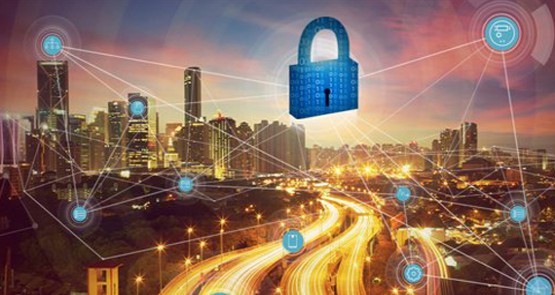
Ravdex uses NES smart meters, together with Develco communications solutions, eSmart analytics and OneCo integration services to help prepare their low-voltage grid for the smart energy transition and massive update of electric vehicles planned for Denmark in the next decade.
By combining data streams, Ravdex is merging high volume granular data from an increasing number of channels to provide a stronger foundation for its advanced analytics.Key Energy Transition Drivers
Denmark is leading the world in adoption of electric vehicles and implementation of generation from renewables, specifically wind and solar.
Currently, there are around 15,000 electric vehicles out of around 3 million in Denmark, so around 0.5%. The government is targeting between 1/3 and 1/2 of vehicles to be electric by 2030. In support of this, the Danish Energy association has calculated that the Danish utilities need to invest around 4,25 – 6,4 Billion Euro in Expansion of the Grid. This will support the planned deployment of 250 chargers, daily, between 2020 – 2030.
“The changes in the Danish energy market to support the massive up-take in electric vehicles are wide-reaching”, says Jørgen Skov Rasmussen, CTO at Ravdex. “It is not just a technology challenge. We need to look at how we stream-line our business decision making process so that the deployed technology is used most effectively. A small DSO like Ravdex needs to employ automation in building the business insight, so we need to get access to the information from the grid.”

Clean Energy
Package
Electric
Vehicles
Efficiency
Improvements
Fraud and
Theft
The low voltage network is where our service is consumed, where clean energy is generated, where losses occur & where our customers experience the service we provide.
Where is your visibility of low-voltage network coming from?
Sensor deployments are expensive and static
Back-end analytics require perfect information to generate insight
Field-visits are expensive and detract from other work
To gain business and operatons insight, you need to measure directly & measure often
This drives organizations like Ravdex to profoundly change the way that they view their obligations to supply energy. Generation will be more distributed, and consumption associated with car-charging will be aligned to areas where electric vehicles are being taken up. This means that Ravdex needs to:
• Get ready for the transformations leading from solar, wind, hydro, storage, micro-grids and electric vehicles; led by significant government initiatives in Denmark!
• Identify areas of energy loss or distribution system inefficiency
• Identify overloaded and under-utilised capacity
• Identify those areas where the planned increase in demand on the low-voltage grid cannot be met by existing infrastructure.
The key is visibility and control:
• Understand more about the performance of the LV grid, because it is in the low-voltage grid that all this change is happening
• Enable automation in the LV grid based on better awareness, including being able to limit supply to electric car-chargers based on load and/or tariff
• Improve operational processes with more up-to-date information – nearly real-time data.
Big Data is the Answer
Certainly, it is the big data systems that provide the back-end visualization and analytics of the raw information, and is responsible for generating the business insight, the timely actional intelligence, that drive the business decisions. But, the issue is actually one of how to get to the raw information consistency, reliably and quickly enough to make all the clever “back-end” stuff actually happen.
To drive this, Ravdex invested in eSmart’s Connected Grid solution, but still needed to get to the all-important raw information from the low-voltage grid.
The concept was to deploy NES’s industry leading Smart Meters to provide visibility by:
• Deploying “saturation” measurement points without increasing budget; that is to say, the NES smart meters would be dual purpose, both as consumption meters for billing, but, more importantly to Ravdex, as sensors at every consumption point in the grid
• Getting information out of the LV grid:
o At volume, allowing for frequent measurements of voltage and power variables
o In time to drive actionable and timely insight from the big data platforms
• Ensuring that the information captured is transmitted securely to the big data platforms – no window for cyber-attack.
The Approach
OneCo, the systems integrator for Ravdex, brought NES smart meters and eSmart analytics together. NES smart meters measure the consumer quality of supply and other important supply parameters and expose this information through a dual communications path – combining wireless and ethernet over fibre on one side and PLC on the other.
A dual communications path allows Ravdex to:
• Gather a wide range of information at “normal rates” one associates with high quality meter communications
• Additionally, allow for gathering of key information points at high frequencies
• Allow for near real-time response to ad-hoc requests for information.
Clean Energy
Package
Electric
Vehicles
Efficiency
Improvements
Fraud and
Theft
Analytics
Framework
loT Hub
Stream Analytics
Machine Learning
Service
Fabric
Multi-technology
Communicatons
Sensor
Network
Topology
Discovery
Energy
Flow
Distributed
Intelligence
Sensor
Network
Communications is Key
The outcomes for the project in terms of meter communications were exceptional:
• PLC: Approx. 1,2 MB/day/meter (Load profile, Energy, Max/min Voltage, Current, THD etc.)
• IP (Wireless and Ethernet over Fibre): Approx. 3,3 MB/day/meter (Energy, Power, Voltage).
PLC is used for the standard background activities, which are more associated with “traditional” smart meter deployments, but still transmitting significant volumes of information, never-the-less. The IP connection is used for more frequent polling of more dynamic information, and for ad-hoc information requests.

Through this mechanism, Ravdex is able to gather the whole range of information exposed by the NES smart meter, which includes:
• Active power (kW): forward, reverse
• Maximum forward active power over a specified interval
• Average forward active power over a specified interval
• Maximum reverse active power over a specified interval
• Average reverse active power over a specified interval
• Active energy (kWh): forward, reverse, forward + reverse, forward – reverse
• Reactive power (kVAr): import, export
• Maximum forward active power over a specified interval
• Average forward active power over a specified interval
• Reactive energy (kVArh): import, export
• Apparent Power (VA)
• RMS voltage and current
• Minimum/Maximum/Average voltage over a specified interval
• Power factor/Phase Angle.
The dual communications paths were achieved through the utilization of in-home technology and the supply of another technology party, Develco, to connect the NES smart meter to the local home network.
Outcomes
“The technology outcome is, in its own right, significant”, explains Jørgen. “We have achieved both high volume information about supply quality and near real-time access to information about the consumers energy supply. In business terms we are now able to incorporate information about the grid, even the low-voltage grid and consumer energy supply quality, into the decision making process of the organization”.
In business terms, the outcomes are just as impressive:
Using smart meters to generate information on:
• Voltage and power quality  Prediction of errors
Prediction of errors  Action before interruptions
Action before interruptions
• Power (load of the grid)  Moving load to other
Moving load to other
o Time of the day
o Phases (postpone investments in the grid)
• Maximizing the frequency of measurement and the parameters measured  faster and more reliable actions
faster and more reliable actions
• Using multiple connectivity paths back to the analytics platform to ensure throughput and resilience
• Leveraging security provided by the meter for information at rest in the meter and security provided by protocols for information in transit
• Ensuring “tuneability” of the solution once deployed in the field.
All these help to ensure that Ravdex is a key player in the energy transition being implemented in Denmark.
What’s Next
Ravdex still has a number of exciting capabilities that they can bring to the Danish market, thanks to their choice of NES smart meters:
Ravdex is a Danish company, founded in 2000, though is traces its origins back to 1955. nef Fonden is a provider of fibre services to around 16,500 end-points, with around 37 employees. Ravdex is the Distribution Services Operator for nef Fonden, which includes NEF Fibre (providing connectivity/network and services) and nef Strom (providing energy sales). Because of this size, analytics and automation are key in every aspect of its operation.

Networked Energy Services (NES) Corporation is a global smart energy leader in the worldwide transformation of the electricity grid into an energy control network, enabling utilities to provide their customers with a more efficient and reliable service, to protect their systems from current and emerging cybersecurity threats, and to offer innovative new services that enable active, intelligent use of energy.
NES was formed as a result of the spinoff of Echelon Corporation’s Grid Modernization Division in October 2014. NES is headquartered in the US with R&D centers located in Silicon Valley, North Dakota and Poland, and sales offices throughout the world.
NES’ smart grid technology is used in nearly 40 million smart meters and other smart end devices around the world. NES is a member of the OSGP Alliance, a global association of utilities and smart grid companies, which promotes the Open Smart Grid Protocol and cooperates to provide utilities greater value by enabling true, independently-certified, multivendor interoperability based upon open international specifications and standards. NES smart meters and grid devices are certified as open and interoperable by the OSGP Alliance.




